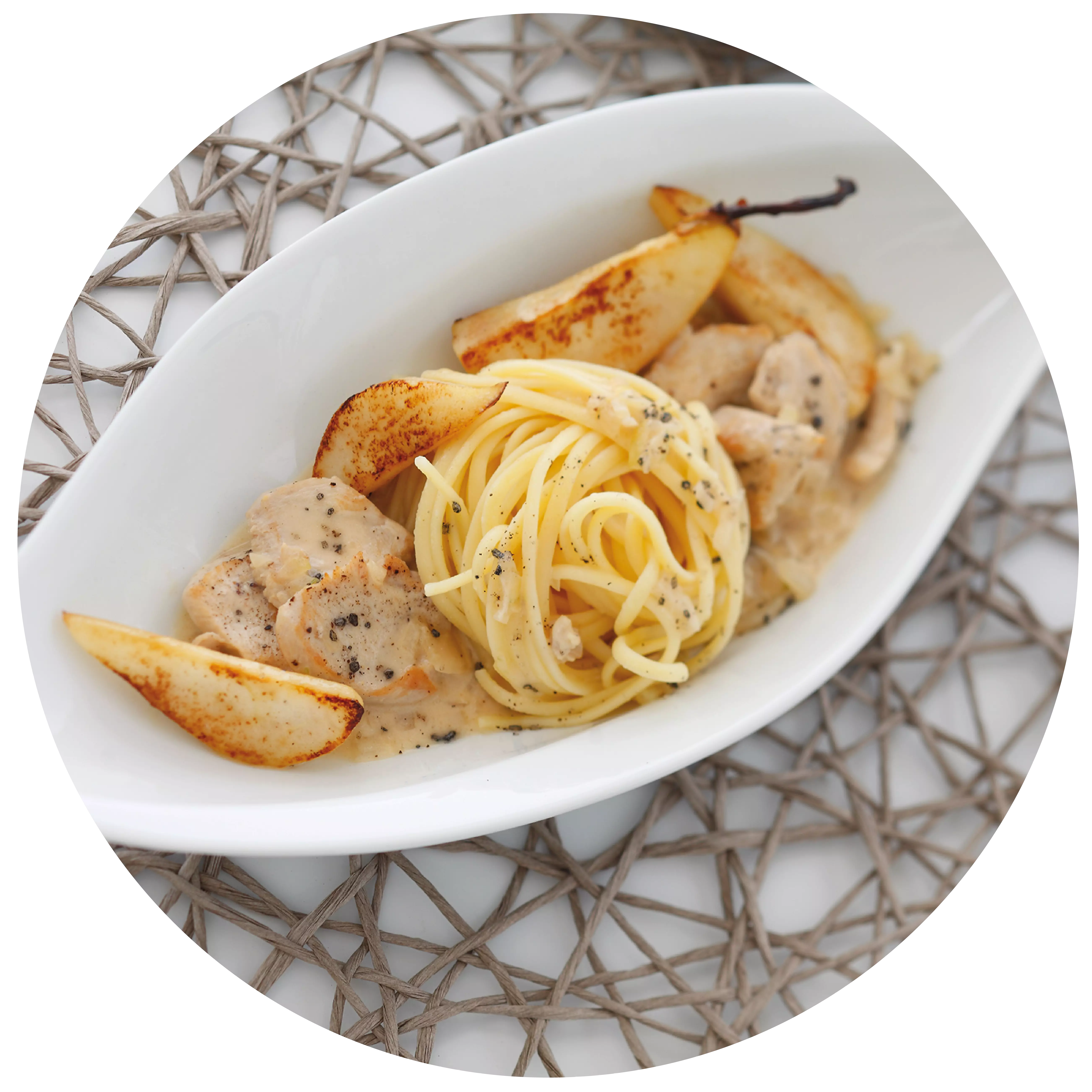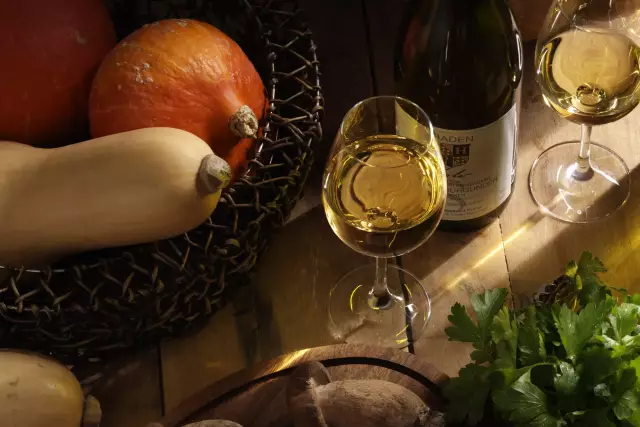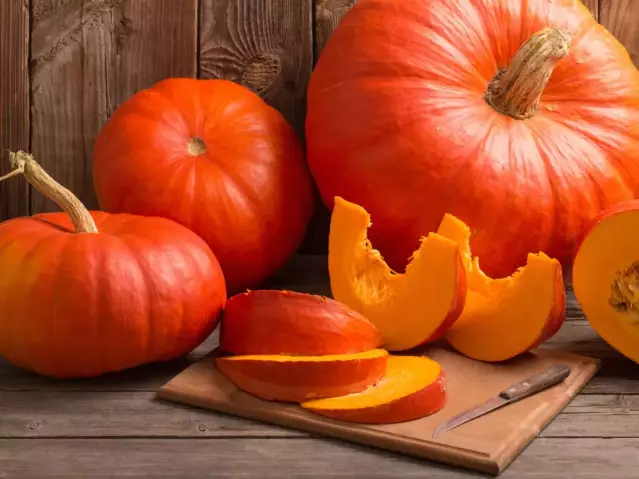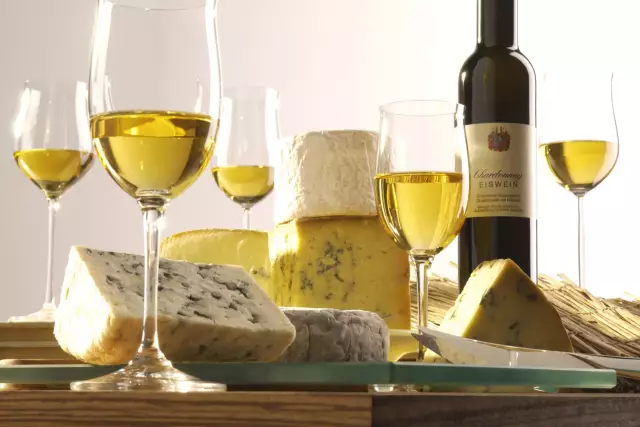Ocean meets Wine
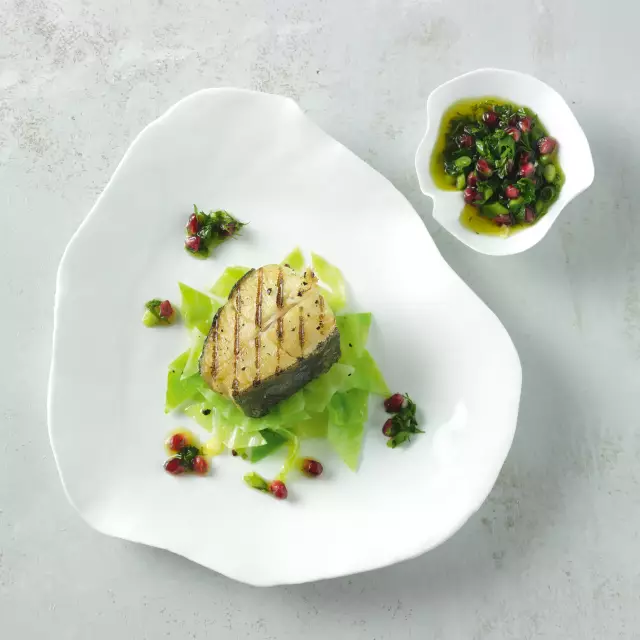
Seafood and fish, paired with delicious wines, sounds like beaches, lively promenades and a wide horizon. Whether prepared Nordic, Asian or Mediterranean: The delights of the oceans harmonize perfectly with German wines if you take a few tips to heart.
Facts
-
70 %
of the earth's surface is made up by the oceans
-
11.034 m
the Mariana Trench is deep
-
9.000 species
different creatures live in the Mediterranean
The great variety of seafood invites you to be creative in the kitchen. And the great variety of German white and rosé wines makes it easy to find just the right wine to go with your crustaceans, mussels and seafood delights. As a rule, rosé or white wines are better companions for shellfish and crustaceans than red wines. This is because the protein of the seafood reacts with the tannins contained in the red wine – and that often leads to a dull, metallic taste.
The classic appetizer is a shrimp or prawn cocktail with a lush cocktail sauce. Since the crabmeat is subtly sweet, the appetizer may even be served with canned fruit such as peach or pineapple pieces. A strong, pleasantly dry single-site Riesling, to be found in many German wine-growing regions, is a harmonious companion for the shrimp cocktail. And if you serve the prawn cocktail along with the aperitif, you will be delighted to find how well it is suited to Winzersekt Brut with Riesling or Pinot Blanc as a base wine.
In the Mediterranean cuisine, crustaceans are often sautéed in a pan with olive oil, garlic, tomatoes and herbs, and they are often served alongside pasta. The fine vegetable aromas are nicely accentuated by a chewy Silvaner or a complex Sauvignon Blanc.
Fans of Asian food may use crustaceans in a Thai curry, prepared with ample amounts of ginger, chili and fresh, crisp vegetables. Lovely with Riesling, Muscatel and Scheurebe with subtle residual sugar. If you prefer dry wines, try your Thai curry with a creamy Pinot Blanc.
Mussels or cockles boast tender meat and a subtle taste. As a rule, they are steamed and served with a sauce that is not too dominant and uses root vegetables, white wine, pepper, cream or tomato puree as ingredients. These mussels also taste great in Mediterranean pasta dishes. Ideally, they are accompanied by not too full-bodied and dry white wines such as Müller-Thurgau, Pinot Blanc or Silvaner. A Portugieser rosé is another great choice.
A dry Winzersekt is not the only suitable companion for oysters, which are enjoyed raw, very well chilled and with just a few splashes of lemon juice. Their pure taste also goes very well with a light white wine with subtle aromas, such as Chasselas from the Markgräflerland region, an Auxerrois from the upper reaches of the Moselle or a Pinot Blanc from Franconia. The adventurous among you might want to try and combine oysters with noble sweet wines, as the Russian tsars used to do. A Riesling Auslese or Beerenauslese from the Moselle or the Middle Rhine region that has aged for a long time is an excellent choice. The saltiness of the oyster will interplay with the slate minerality and the mature fruitiness of these wines.
Seafood such as squid or octopus is often fried and served with a dip of aioli. They go very well with a crisp, fresh and dry Pinot Noir rosé or a dry Pinot Gris. If the shellfish is thinly sliced and served as a carpaccio, marinated in lime juice and olive oil, a dry Silvaner or Sauvignon Blanc might prove to be the best companion.
During the barbecue season, lobster or crayfish can be cut in half lengthwise and roasted on the shell, merely seasoned with butter, salt and pepper. The hearty roast aromas of the barbecue render the taste of the crustaceans even more intense. Consequently, they can take full-bodied wines with wooden cask aromas – such as barrique Chardonnay or Pinot Blanc from the Pfalz region or Baden.
Shellfish such as scampi and prawns are roasted in a grill tray inside their shell, so they don’t lose too much of their juice. All seafood should never be cooked for too long or over too much heat. This kind of seafood likes a fresh Pinot Blanc.
Fish such as trout, char and gilthead are often softer and juicier when grilled wrapped in tin foil rather than directly on the grate. Pinot Blanc, Chardonnay and Silvaner are perfect partners. A light Riesling from the Moselle with subtle fruitiness is welcome as well.
If the fish is prepared directly on the grate or in a grill tray, maybe even marinated or strongly seasoned, it requires a partner such as a stronger Riesling or Chardonnay. A lightly chilled dry red wine can also be an adequate companion for heartily seasoned fish.
Whole fish with herbs can take a juicy Silvaner, which also boats herbal aromas – or even a red wine that is not too full-bodied.
Where is the northernmost vineyard in Germany?
Germany's northernmost vineyard is located on Sylt. On 3,000 square meters, interested people have taken over the sponsorship of 555 vines, from which the "Söl'viin" has been produced since 2014.
Varietals

More recipe ideas
with semi-frozen goat's milk Lavender waffles
with semi-frozen goat's milk
- 2 Stück Eigelb
- 60 ml Ziegenmilch
- 500 Gramm weiße Kuvertüre
- 125 ml Sahne
- Abrieb und Saft einer halben Orange
- 2 cl Tresterbrand
- 8 Blatt Minze
- 125 Gramm Mehl
- 50 Gramm Zucker
- 70 Gramm Butter
- 2 Eier
- 1 Messerspitze Backpulver
- 1/2 EL Lavendelzucker
- 175 ml Milch
Semi-frozen goat's milk: Beat the egg yolks and goat's milk in a bowl over a hot bain-marie until creamy. Remove from the bain-marie and beat the cream until cold. Flavour with the zest of the orange and the marc brandy.
Liquefy the couverture in a bain-marie and stir into the lukewarm egg mixture. Whip the cream until stiff and carefully fold in. Line a parfait tin (triangular or gutter shape) with cling film. Pour in the mixture and smooth out. Cover well with cling film and leave to freeze in the freezer for at least 8 hours.
About 20 minutes before serving, remove the mould from the freezer and turn the parfait out of the mould. Remove the foil and cut the semi-frozen parfait into 8 slices.
<p
<p>Lavender wafers: Lightly mash the butter in a mixing bowl with a fork. Add the sugar and stir a little. Add half of the milk, the lavender sugar and the baking powder. Stir in the eggs and finally the rest of the milk. Mix everything well with a hand mixer for about 2 minutes to create a homogeneous, slightly liquid mixture. Bake the batter in batches in a waffle iron until golden brown.</p
<p>Arrange 2 slices of semifreddo on each waffle on a flat plate and decorate with mint leaves.
- Riesling (halbtrocken & feinherb)
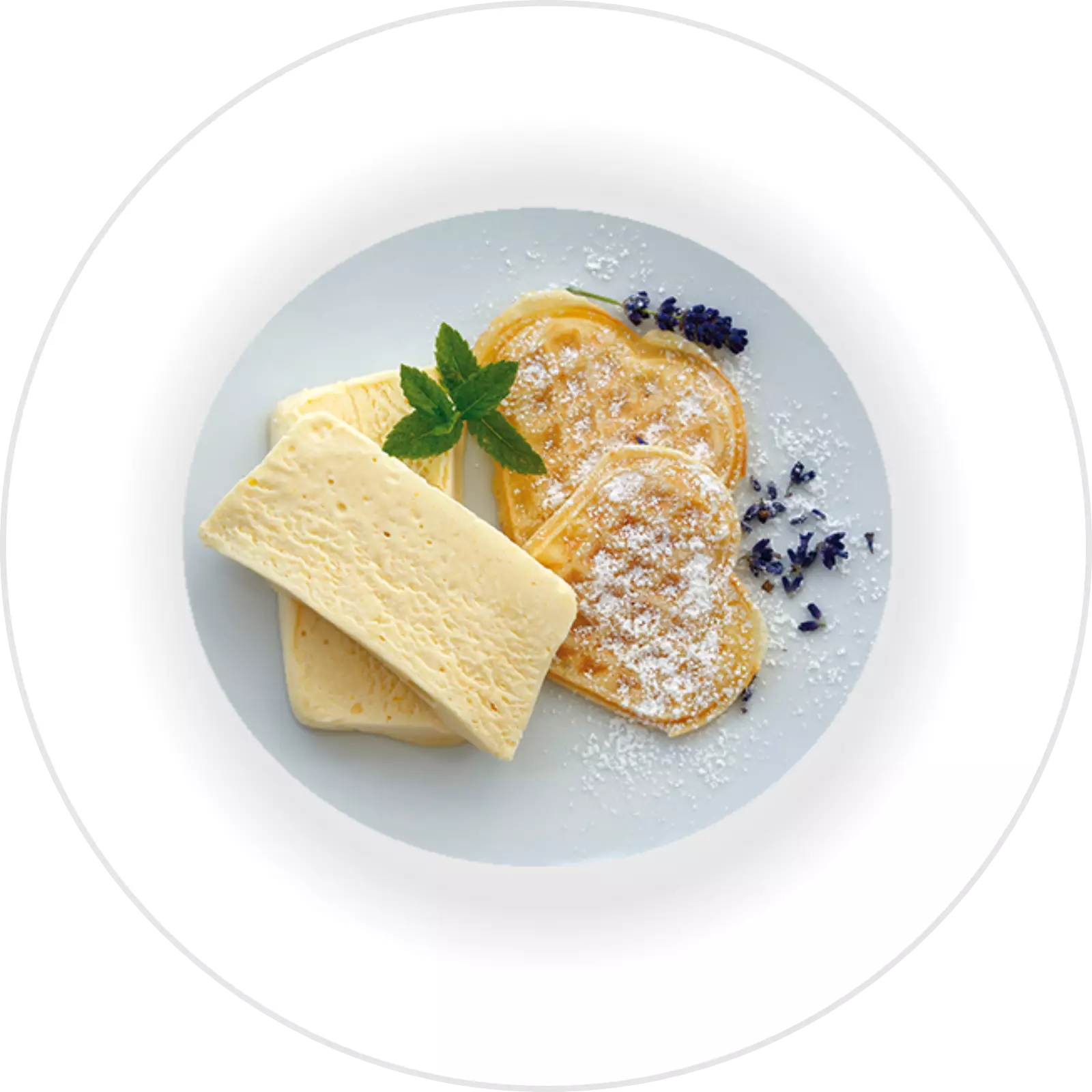
a Christmassy dessert Plum roaster with cinnamon ice cream
a Christmassy dessert
- 1 kg Zwetschgen (frisch oder TK)
- 100 Gramm Zucker
- 0.5 TL gemahlener Zimt
- Eine Prise Nelkenpulver
- 50 ml Pflaumenschnaps
- 50 Gramm dunkler Rohrzucker
- 2 EL alter Balsamicoessig
- 200 Gramm Zucker
- 4 Eigelb
- 500 ml Sahne
Plum rings:
Wash, deseed and quarter the plums. Spread the sugar evenly in a non-stick pan and melt slowly over a medium heat. Increase the temperature and immediately add the fruit, schnapps and spices. Stir until the mixture caramelises.
Stir in the muscovado sugar and balsamic vinegar, spread onto a cold plate after approx. 3 minutes.
<p
<p>Cinnamon ice cream:
Combine the sugar and egg yolks and stir the two ingredients over a bain-marie until frothy.
Whip the cream, then carefully mix both mixtures and add three teaspoons of cinnamon. Carefully mix the cinnamon into the mixture again.
Pour the finished mixture into any (cake) tin or small dish, cover with aluminium foil and place in the freezer for at least three hours.
Place the plums on four deep plates or small bowls, cut off 2 – 3 ice lollies each and place on top, serve immediately.
- Gewürztraminer (trocken)
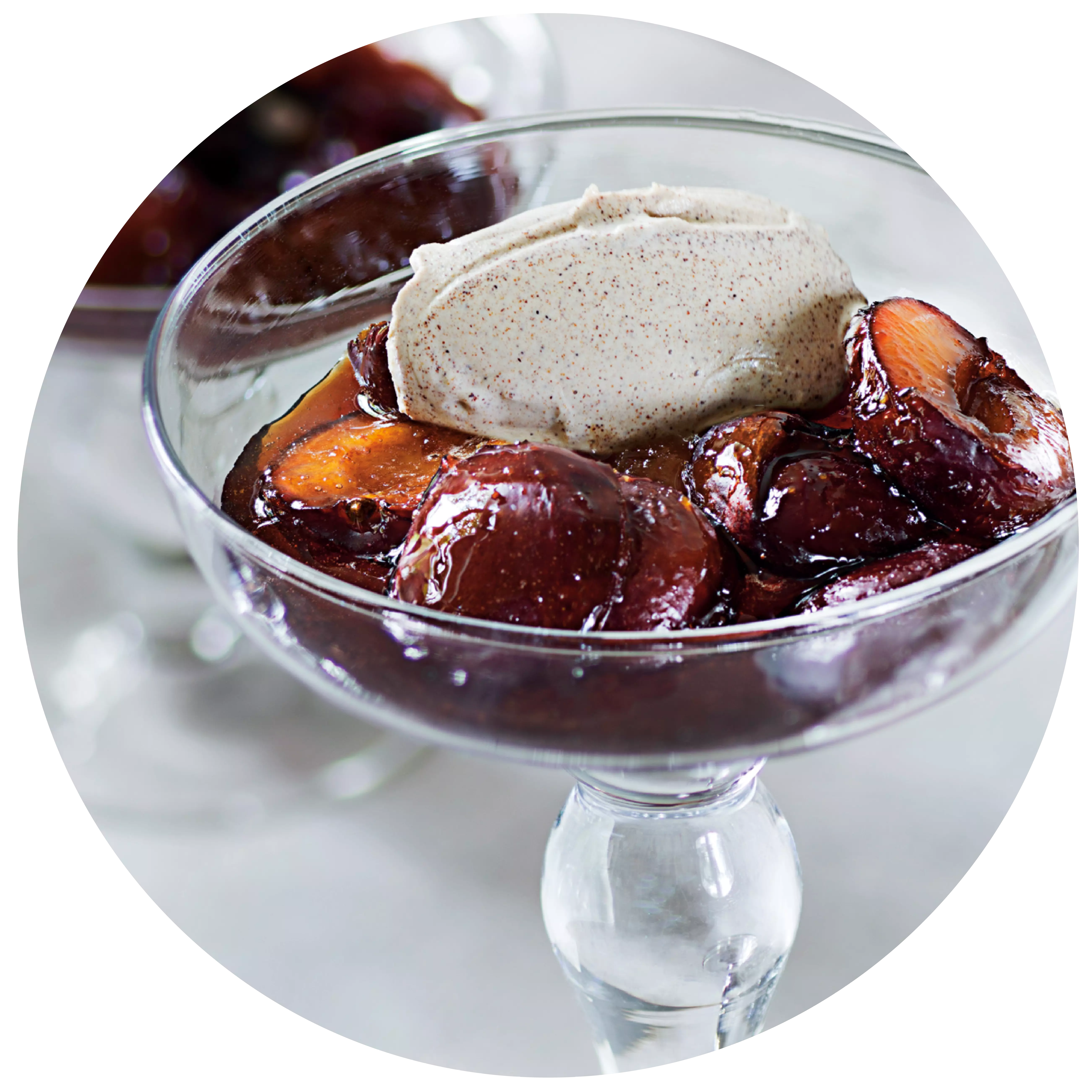
the classic with a difference Franconian cider soup
the classic with a difference
- 500 ml Weißwein (Spätlese)
- 500 ml Geflügelbrühe
- 350 ml Sahne
- 30 Gramm Zwiebeln
- 30 Gramm Weißes vom Lauch
- 30 Gramm Sellerie
- 30 Gramm Karotten
- 30 Gramm Butter
- 180 Gramm Mehl
- 2 Lorbeerblätter
- 1 EL Butterschmalz
- 4 Scheiben Weißbrot
- Nach Belieben Zucker, Muskat, Zimt, Salz
Sauté the vegetables in butter until lightly browned, dust with flour and then add the vegetable stock, wine and 250 ml cream. Add the spices and simmer for approx. 15 minutes.
Remove the crusts from the slices of white bread and cut into 1 cm cubes. Fry in hot clarified butter until golden brown and season with cinnamon, whip the remaining cream until stiff.
<p
<p> Strain the soup and flavour with nutmeg and salt.
Pour into deep plates, garnish with whipped cream and the cinnamon crusts.
- Müller-Thurgau (trocken)
- Silvaner (trocken)
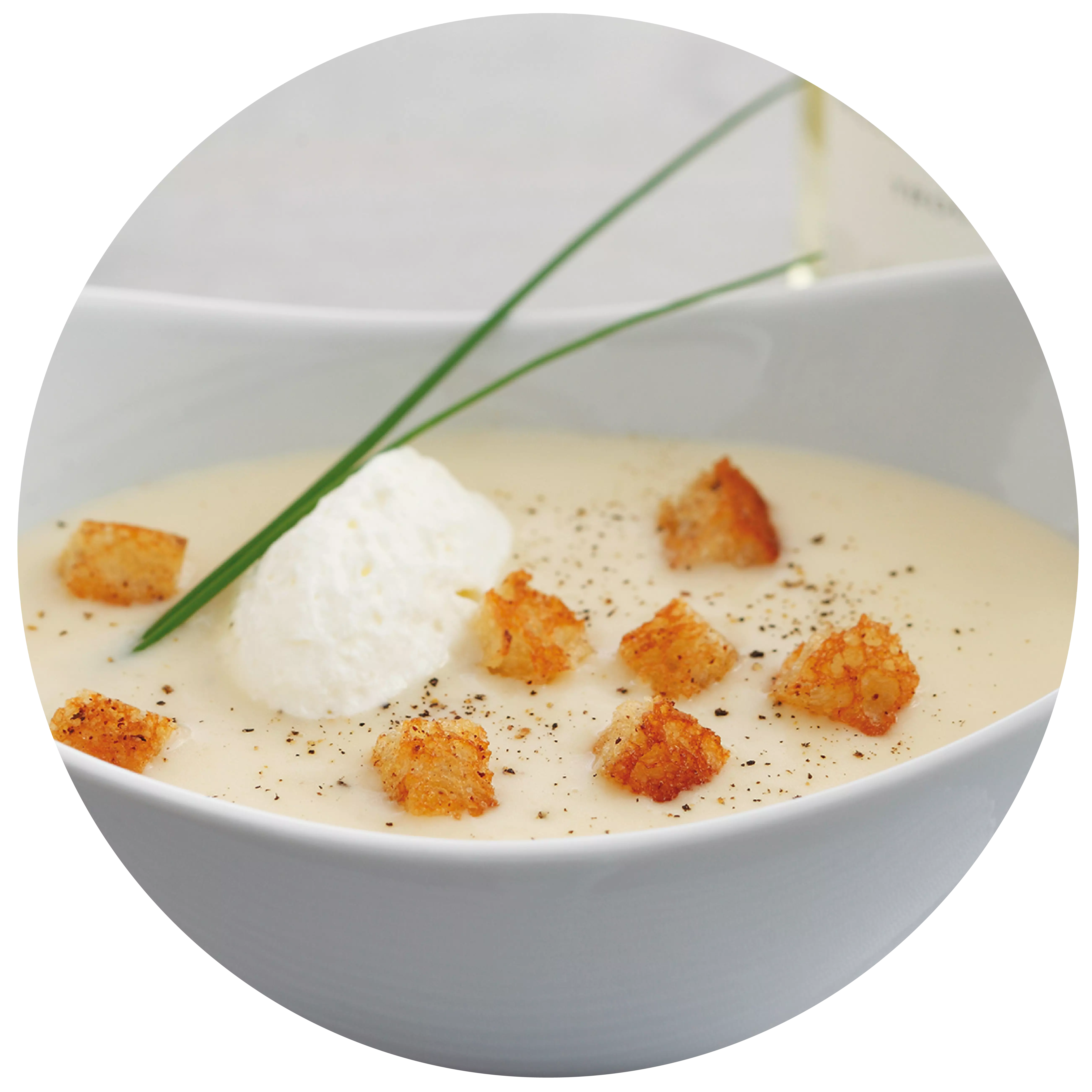
with pear wedges Chicken breast strips
with pear wedges
- 500 Gramm Hähnchenbrustfilet
- 2 reife Birnen
- 200 ml Birnensaft
- 100 ml Sahne
- 1 ganze Zwiebel
- 4 EL Olivenöl
- nach Belieben Salz & Pfeffer
Cut the chicken breast fillet into strips. Peel the onion and cut into cubes. Heat the olive oil in a pan and fry the meat in it. Add the diced onion and season with salt and freshly ground pepper.
Wash and peel the pears, remove the skin, cut into wedges and sauté in the pan. Deglaze with the pear juice and allow to reduce slightly.
<p
<p>Finally, add the cream and season to taste.
- Müller-Thurgau (halbtrocken & feinherb)
- Kerner (halbtrocken & feinherb)
